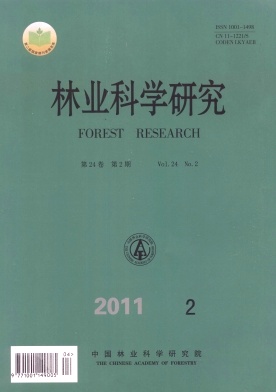|
[1]
|
Pacala S W, Hurtt G C, Baker D,et al. Consistent land and atmosphere-based U.S. carbon sink estimates[J]. Science,2001,292: 2316-2320 |
|
[2]
|
史 军,刘纪远,高志强,等.造林对陆地碳汇影响的研究进展[J].地理科学进展,2004,23(2):58-67
|
|
[3]
|
张小全,武曙红,何 英,等.森林、林业活动与温室气体的减排增汇[J].林业科学,2005,41(6):150-156
|
|
[4]
|
雷丕锋,项文化,田大伦,等.樟树人工林生态系统碳素贮量与分布研究[J].生态学杂志,2004,23(4):25-30
|
|
[5]
|
裴志永,欧阳华,周才平.青藏高原高寒草原碳排放及其迁移过程研究[J].生态学报, 2003,23(2):231-236
|
|
[6]
|
何 斌,刘运华,余浩光等.南宁马占相思人工林生态系统碳素密度与贮量[J].林业科学,2009,45(2):6-11
|
|
[7]
|
Fang J Y, Chen A P,Peng C H, et al. Changes in forest biomass carbon storage in china between 1949 and 1998[J].Science, 2001,292:2320-2322 |
|
[8]
|
方精云,郭兆迪,朴世龙,等.1981-2000 年中国陆地植被碳汇的估算[J].中国科学 D:地球科学,2007,37(6):804-812
|
|
[9]
|
康惠宁, 马钦彦, 袁嘉祖.中国森林C汇功能基本估计[J].应用生态学报,1996,7(3):230-234
|
|
[10]
|
刘国华, 傅伯杰, 方精云.中国森林碳动态及其对全球碳平衡的贡献[J].生态学报,2000,20(5):733-740
|
|
[11]
|
孙玉军,张 俊,韩爱惠,等.兴安落叶松(Larix gmelini)幼中龄林的生物量与碳汇功能[J].生态学报,2007,27(5):1756-1762
|
|
[12]
|
David E R, Zhanna Y, Allison L B. Loss and recovery of ecosystem carbon pools following stand-replacing wildfire in Michigan jack pine forests[J]. Canadian Journal of Forest Research, 2004, 34(9): 1908-1918 |
|
[13]
|
方 晰,田大伦,项文化.速生阶段杉木人工林碳素密度、贮量和分布[J].林业科学,2002,38(3):14-19
|
|
[14]
|
魏文俊,王 兵,白秀兰,等.杉木人工林碳密度特征与分配规律研究[J].江西农业大学学报,2008,30(1):73-80
|
|
[15]
|
Niu D, Wang S L, Ouyang Z Y. Comparisons of carbon storages in Cunninghamia lanceolata and Michelia macclurei plantations during a 22-year period in southern China[J]. Journal of Environmental Sciences, 2009,21(6):801-805 |
|
[16]
|
江泽慧,范少辉,冯慧想,等.华北沙地小黑杨人工林生物量及其分配规律[J].林业科学,2007,43(11):15-20
|
|
[17]
|
宗萍萍,鲍玉海,杨吉华,等.黄泛沙地小网格农田防护林网防护效应的研究[J].水土保持学报,2005,19(6):110-113
|
|
[18]
|
李继红.绥化市秦家镇农田防护林网络架构及生态农业效益分析[J].东北林业大学学报,2006,34(6):101-106
|
|
[19]
|
李建华,李春静,彭世揆.杨树人工林生物量估计方法与应用[J]. 南京林业大学学报:自然科学版,2007,31(4):37-40
|
|
[20]
|
Easterling W E, Brandle J R, Hays C J, et al.Simulating the impact of human land use change on forest composition in the great plains agroecosystems with the seedcape model[J]. Ecology Model, 2001, 140:163-176 |
|
[21]
|
陈 军.杨树人工林地上生物量和碳储量研究 .北京:北京林业大学,2007
|
|
[22]
|
Chiba Y. Plant form based on the pipe model theory Ⅱ. quantitative analysis of ramification in morphology[J]. Ecological Research, 1991, 6:21-28 |
|
[23]
|
马钦彦,陈遐林,王 娟,等.华北主要森林类型建群种的含碳率分析[J].北京林业大学学报,2002,24(5):96-100
|
|
[24]
|
康 冰,刘世荣,张广军,等.广西大青山南亚热带马尾松、杉木混交林生态系统碳素积累和分配特征[J].生态学报,2006,26(5):1320-1329
|
|
[25]
|
方升佐,章小明,徐锡增,等.杨树无性系生物量生产的三维模拟研究[J].南京林业大学学报,1999,23(5):7-12
|





 DownLoad:
DownLoad: